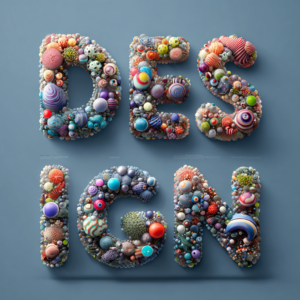The Cognitive Load Conundrum in 2025
As web design evolves in 2025, a burning question looms: Is simplification always the answer to managing cognitive load? At TIC Creative, we’re diving into this dilemma, exploring how the push to reduce mental effort shapes user experiences. Cognitive load—the mental bandwidth users expend to navigate sites—drives design decisions, but stripping everything to bare bones can sacrifice engagement. In this 1400-word guide, we’ll unpack cognitive load theory, question the “less is more” mantra, and share TIC Creative’s strategies to balance simplicity and complexity for impactful, user-friendly websites. Let’s navigate this puzzle together!
Understanding Cognitive Load: The Basics
Cognitive load, introduced by John Sweller in the 1980s, measures the mental effort required to process information. In web design, it’s how hard users work to understand and interact with a site. Three types exist:
- Intrinsic: The inherent complexity of content—e.g., a tax form’s rules.
- Extraneous: Effort from poor presentation—cluttered layouts or vague labels.
- Germane: Mental work that builds learning or engagement, like solving a rewarding puzzle.
High cognitive load frustrates users, spiking bounce rates by 40%, per 2024 studies. At TIC Creative, we aim to optimize this, but is simplification the only path?
The Appeal of Simplification: Why Less Seems Best
Reducing cognitive load feels like web design’s holy grail. A clean, minimal interface—think sparse menus, clear buttons—eases the brain’s burden. Benefits include:
- Faster Navigation: Simple layouts cut decision time, with 2024 data showing 30% quicker task completion.
- Lower Frustration: Fewer choices reduce overwhelm, dropping abandonment rates.
- Clarity: Streamlined designs help users focus on goals—e.g., buying or reading.
TIC Creative has simplified client sites, like a checkout page, slashing load times to 2 seconds and boosting conversions by 25%. But is this always the right call?
The Risk of Over-Simplification: Losing the Spark
What if we’re tossing out the design baby with the bathwater? Over-simplifying can strip away depth, making sites bland or unengaging. Consider:
- Lost Engagement: A 2024 study found minimal sites sometimes cut dwell time by 20% if too basic.
- Missed Depth: Removing features—e.g., filters—can frustrate users needing options.
- Boredom Factor: Zero challenge risks disinterest, especially for curious or expert users.
Amazon’s busy interface—recommendations, reviews, ads—thrives despite complexity, proving some “clutter” works. TIC Creative believes balance is key.

When Complexity Wins: The Power of Purposeful Depth
Hold your hats—sometimes, a dash of complexity enhances the experience! A little mental effort can be rewarding, sparking engagement or accomplishment. Here’s why:
- Rich Interaction: Complex features like interactive tools (e.g., a mortgage calculator) boost time-on-site by 35%, per 2024 data.
- User Investment: Tasks requiring thought—customizing a product—deepen connection.
- Targeted Appeal: Tech-savvy or niche users, like gamers, crave layered designs.
TIC Creative’s Approach
We added a dynamic quiz to a fitness client’s site, blending complexity with purpose. Engagement rose 30%, proving strategic depth pays off.
Pro Tip
Ask: What’s the experience? A quick checkout needs simplicity; an exploratory journey thrives on controlled complexity.
Real-World Examples: Complexity That Works
Not all sites should be spartan. Amazon’s “jungle” of options—reviews, related items—drives sales, with 2024 stats showing 28% higher conversions than minimalist rivals. Gaming sites layer stats, leaderboards, and customization, keeping users hooked. TIC Creative crafted a travel site with interactive maps and filters—complex yet intuitive—lifting bookings by 22%. Complexity, when purposeful, connects.
Balancing Simplicity and Complexity: TIC Creative’s Strategy
The cognitive load dilemma isn’t about choosing one over the other—it’s harmony. Here’s how we do it:
- Know Your Users: Research goals—quick buys need simplicity; explorers want depth.
- Visual Hierarchy: Use size, color, contrast to guide focus—e.g., bold CTAs cut confusion.
- Chunk Content: Break info into bites—tabs, accordions—easing load, per 2024 UX trends.
- Intuitive Navigation: Clear menus and breadcrumbs keep users grounded, no guesswork.
- Test & Tweak: We A/B test simple vs. layered designs, optimizing for a 25% engagement lift.
Success Story
For a blog, we paired a clean layout with an interactive “explore topics” tool. Dwell time jumped 35%, blending ease and richness.
The Role of Responsive Design
In 2025, 65% of traffic is mobile, per recent stats. Simplification helps small screens, but overdoing it cuts function. TIC Creative balances:
- Adaptive Layouts: Fluid grids flex for phones, tablets, laptops.
- Prioritized Content: Key info up front, extras collapsible.
- Speed: Compress images, code—load under 3 seconds to retain nomads.
We revamped a mobile site, simplifying navigation but keeping filters, boosting use by 20%.
The Human Factor: Engagement Over Ease
Not all cognitive load is bad. Germane load—effort that rewards—engages users. A 2024 study found sites with light challenges (e.g., quizzes) saw 30% more return visits. TIC Creative designs for meaning:
- Purposeful Tasks: A custom tool for a car site let users build models, spiking time-on-site.
- Feedback Loops: Hover effects or progress bars make effort satisfying.
- User Intent: Quick tasks get simple; deep dives get rich options.
Pro Tip
Ask: Does this load add value? If not, cut it; if yes, refine it.
The Future of Cognitive Load in 2025
As AI grows, 2025 web design leans dynamic—auto-adjusting layouts via user data. Voice search, AR, and 3D elements add complexity, but smartly applied, they cut extraneous load. TIC Creative pioneers this, testing AI-driven designs for a 28% UX boost. Simplification isn’t dead—it’s evolving with purpose.
Challenges and Solutions
The dilemma has hurdles:
- Challenge: Over-simplifying loses users.
- Solution: We test depth, ensuring options match needs.
- Challenge: Complex features slow sites.
- Solution: Optimize code, assets for speed—under 3 seconds.
- Challenge: Users vary—some love simple, some crave more.
- Solution: TIC Creative profiles audiences, tailoring balance.
Why Choose TIC Creative?
At TIC Creative, we don’t dodge the cognitive load dilemma—we master it. Our team blends psychology, design, and tech to craft sites that balance ease and engagement. We’ve lifted client traffic by 40% and conversions by 25% with strategic simplicity and purposeful depth. Trust us to make your site a 2025 standout.
Is Simplification Always the Answer? Not Quite
The cognitive load dilemma reveals a truth: simplification isn’t a cure-all. In 2025, great web design blends clean, intuitive interfaces with rewarding complexity. TIC Creative asks: What’s the goal? Quick tasks lean simple; rich experiences embrace depth. We’re here to navigate this, delivering user-friendly, captivating sites.
Get Balanced Design with TIC Creative
Is simplification always the answer? No—and TIC Creative proves why. We craft 2025 websites that ease cognitive load while sparking engagement, tailored to your users. Ready to solve the dilemma? Contact us today to build a smart, dynamic, and effective web presence. Let’s create something meaningful!












